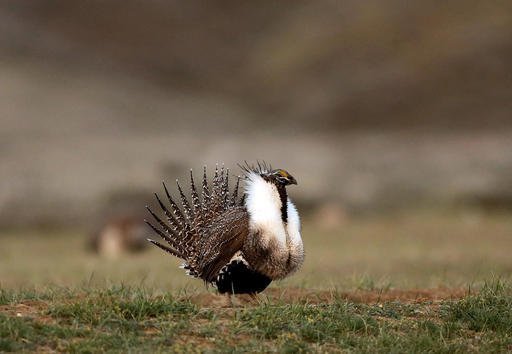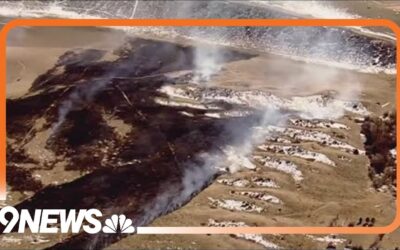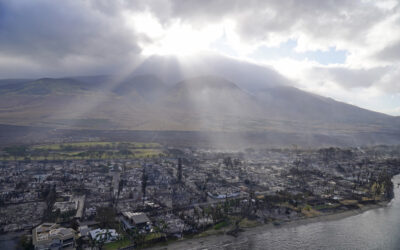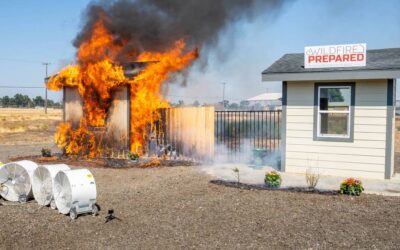New plan is expected to continue after Obama administration ends

FILE – In this April 22, 2015, file photo, a male sage grouse struts in the early morning hours on a leak outside Baggs, Wyo. Interior Secretary Sally Jewell said Tuesday, Jan. 3, 2017, that a new wildfire-fighting plan to protect a wide swath of sagebrush country in the West that supports cattle ranching and is home to an imperiled bird will likely continue after the Obama administration ends. (Dan Cepeda/The Casper Star-Tribune via AP, File)
KEITH RIDLER, Associated Press
BOISE, Idaho (AP) — A new wildfire-fighting plan to protect a wide swath of sagebrush country in the Western U.S. that supports cattle ranching and is home to an imperiled bird will likely continue after the Obama administration ends, Interior Secretary Sally Jewell said Tuesday.
Jewell spoke after receiving her last update at the National Interagency Fire Center in Boise where managers oversee the nation’s firefighting resources.
Her 2015 secretarial order to protect sagebrush steppe spanning an area stretching from the Dakotas west to Oregon, Washington and northern California is considered by public lands experts, outdoor enthusiasts and scientists as one of the most significant federal land policy changes since the Taylor Grazing Act of 1934. It regulated public lands to prevent overgrazing.
Jewell’s order directed federal resources for the first time to fight massive blazes in open sagebrush steppe that supports cattle ranching, recreation and some 350 species of wildlife, including sage grouse.
She said she will pass along information from that meeting to Republican Montana Rep. Ryan Zinke, President-elect Donald Trump’s choice to succeed her.
Zinke has advocated increased drilling and mining on public lands, but his position on Jewell’s secretarial order is not clear. Zinke’s communications director, Heather Smith, did not immediately respond to an emailed request for comment.
Jewell also said she will provide the transition team details “on the importance of maintaining the momentum that we have in arguably one of the most effective examples of government working together collaboratively at all levels.”
Western Republican governors have generally supported the effort that involves federal, state, and local agencies as well as ranchers trained to fight fires in the early stages.
Jewell’s order “revolutionized how we approach rangeland fire in the West,” said Ron Dunton, the U.S. Bureau of Land Management’s assistant director for Fire and Aviation. “It’s a very collaborative approach.”
In October, the Interior Department released a 139-page plan considered a how-to guide for Jewell’s order calling for a “science-based” approach to safeguard the greater sage grouse bird while contending with fires that have been especially destructive in the Great Basin.
Sage grouse are ground-dwelling, chicken-sized birds found in 11 Western states, where between 200,000 to 500,000 remain, down from a peak population of about 16 million. The males are known for their strutting courtship ritual on breeding grounds called leks, and produce a bubble-type sound from a pair of inflated air sacks on their necks.
Federal officials declined to list the bird under the Endangered Species Act in 2015, but the U.S. Fish and Wildlife Service will review the bird’s status within five years.
Dan Buckley, a member of the National Interagency Fire Center’s National Multi-Agency Coordinating Group that decides where firefighting resources end up, said sagebrush steppe where the bird is found was for a long time considered wasteland.
“But we’ve recognized a lot of the benefits of that ecosystem so it’s important to protect it,” he said. “The secretarial order has focused us to protect it, so that’s what we’ll do.”
Besides the desire to avoid listing sage grouse as endangered, officials say protecting the “sagebrush sea,” as it’s sometimes called, is good because it offers recreational opportunities such as hunting, livelihoods for ranchers, and in places is unique for being an intact ecosystem.
Jewell’s order includes advancing science to better understand that ecosystem and how to make it more resistant to wildfires and more resilient after. Efforts on multiple fronts are underway, including a national seed strategy to have native plant seeds ready to go after a rangeland fire to prevent invasive species from moving in, notably fire-prone cheatgrass that forces out native plants after repeated fires.
Scientists in southwestern Idaho, led by the U.S. Geological Survey, are experimenting on sagebrush rehabilitation techniques following a 436-square-mile rangeland fire in that area in 2015. Idaho Gov. C.L. “Butch” Otter has praised federal officials for that effort.
But it is costing $67 million, and the giant fire left some ranchers unable to graze cattle in burned areas. A key part of Jewell’s order involves preventing big fires at a comparatively small cost.
She noted that’s something the new Trump administration might appreciate.
“An administration that talks about wanting to bring business sense and efficiency into government spending, this is an area where I think they’ll find ripe territory for spending less up front to gain a long-term return on that investment,” she said.
Copyright 2017 The Associated Press. All rights reserved. This material may not be published, broadcast, rewritten or redistributed.




